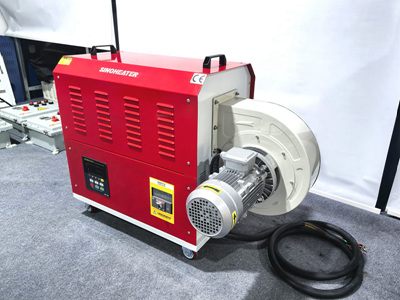Comparing Heating Elements in Portable Heaters: Pros and Cons for Informed Selection
Choosing a portable heater involves understanding how different heating elements impact performance, energy efficiency, and safety. Each technology has unique strengths and limitations, making it essential to align them with specific needs. Below, we explore common heating element types and their applications.
Ceramic Heating Elements
Rapid and Even Heat Distribution
Ceramic elements excel at generating warmth quickly, often reaching desired temperatures within seconds. Their design allows for uniform heat dispersion, reducing cold spots in small to medium-sized rooms. This makes them ideal for bedrooms or home offices where immediate comfort is prioritized.
Energy Efficiency and Cost-Effectiveness
Ceramic heaters typically consume less power compared to other types, especially when paired with adjustable thermostats. They retain heat efficiently, minimizing the need for continuous operation. This balance of performance and energy savings appeals to users seeking long-term affordability without sacrificing warmth.
Safety and Durability Considerations
The ceramic material remains cool to the touch during operation, lowering burn risks. Additionally, many models include overheat protection and tip-over shutoff features. However, ceramic elements may degrade over time if exposed to frequent temperature fluctuations, potentially reducing lifespan in high-use environments.
Infrared Heating Elements
Direct and Instant Warmth
Infrared technology emits radiant heat that warms objects and people directly, rather than heating the surrounding air. This approach provides immediate comfort, similar to sunlight, making it effective for drafty spaces or outdoor areas like patios. Users often notice warmth without waiting for the room to “fill” with heat.
Silent Operation and Low Maintenance
Infrared heaters operate quietly, as they lack moving fans or motors. This makes them suitable for bedrooms, libraries, or offices where noise disruption is a concern. Their simple design also reduces maintenance needs, with no filters to replace or complex components to service.
Limited Air Circulation and Humidity Effects
While efficient for targeted heating, infrared elements do not improve air circulation. This can lead to uneven warmth in larger rooms or areas with poor ventilation. Additionally, prolonged use may slightly reduce indoor humidity, requiring users to monitor comfort levels in dry climates.
PTC (Positive Temperature Coefficient) Heating Elements
Self-Regulating Temperature Control
PTC heaters use a ceramic material that automatically adjusts resistance based on temperature. As the element heats up, its electrical resistance increases, reducing power consumption and preventing overheating. This self-regulating feature enhances safety and eliminates the need for manual thermostat adjustments in many cases.
Longevity and Resistance to Wear
PTC elements are known for their durability, often outlasting traditional coil or ceramic components. They resist corrosion and physical damage, making them suitable for high-traffic areas or environments with dust and debris. Their robust construction also reduces the risk of electrical failures over time.
Slower Heat Output Compared to Alternatives
While PTC heaters excel in safety and longevity, they may take longer to reach peak temperatures than infrared or coil-based models. This trade-off is often acceptable in settings where steady, controlled warmth is preferred over rapid heating, such as in living rooms or shared workspaces.
Convection Heating Elements
Effective for Whole-Room Warmth
Convection heaters rely on heating air, which then rises and circulates naturally throughout the space. This method is ideal for enclosed areas like basements or large living rooms, where consistent temperature distribution is critical. Many models include fans to accelerate airflow, improving efficiency in larger zones.
Versatility in Design and Placement
Convection heaters come in various forms, including oil-filled radiators and fan-assisted units. Oil-filled models retain heat longer after shutdown, while fan-assisted versions offer quicker warming. Their adaptability suits diverse needs, from permanent installations to temporary heating solutions.
Higher Energy Consumption for Large Spaces
Heating air requires more energy than radiant methods, especially in poorly insulated rooms. Convection heaters may also take longer to raise ambient temperatures, leading to higher operational costs over time. Users should consider insulation quality and room size when evaluating their suitability.
By analyzing these heating element types, buyers can match a heater’s technology to their specific environment and priorities. Whether prioritizing speed, safety, or whole-room coverage, understanding the trade-offs ensures optimal performance and satisfaction.




